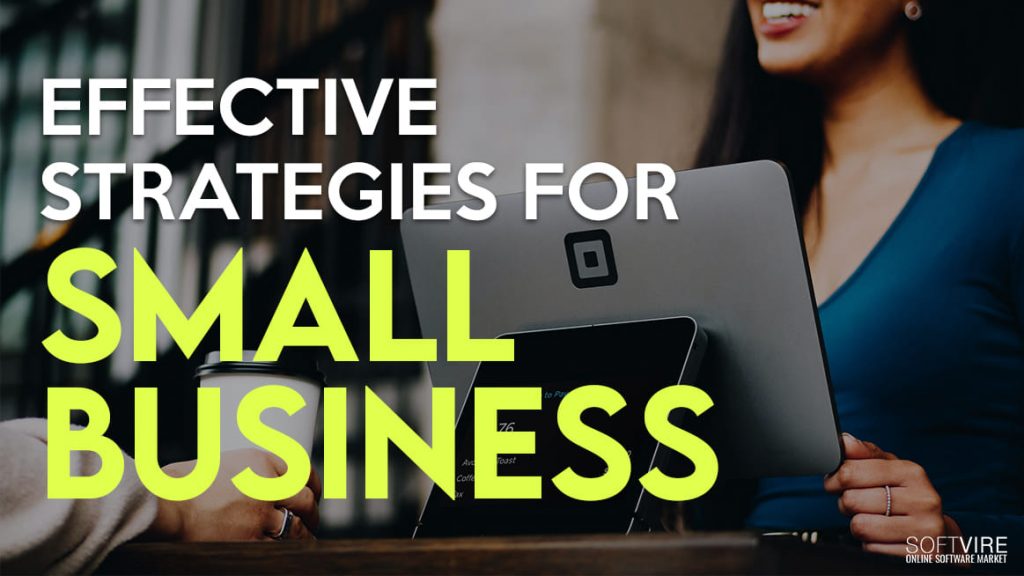
The success of a small business has a lot to do with its marketing plan. Marketing is used to attract the customers needed to keep a business viable and operational. Marketing strategies are used to help a business achieve sales goals and branding initiatives. Through a variety of tactics, marketers work to attract the right customers to the business.
When business owners sit down to write their marketing plan, they need to consider what makes sense for their small business? What is working in the marketplace? And where should they start? How can we effectively market and scale with a tight budget?

It can be challenging to decide where to invest your time and limited resources in marketing. Should you invest in the top of the funnel or the bottom?
A full-funnel approach is usually the most sustainable over time. Certain strategies are just out of reach and do not make sense for smaller companies — like, for example, TV advertising. But here are fourteen tried-and-tested marketing strategies every startup or small business should consider:
1. Establish A Brand
For a small business’s customers and potential customers to know what their company is, does and stands for, they need to have a clear brand identity. Once they have decided on their company’s identity they need to match it with a suitable name, logo, colors and imagery that conveys their brand to customers.
Small businesses owners might decide to establish a brand look with the help of a freelancer or by collaborating with an established agency. This process can be costly but in the end, it is worth it. Think about the recognition of established brands like McDonald’s or Starbucks and how that recognition is tied to their brands, logos and colors.
Once a company has their logo, they should put it on everything: advertising, business cards, website, envelopes and email signatures.
2. Know Your Customer
There is no such thing as a one size fits all marketing strategy. Each business caters to a different niche in the market and therefore each company requires a marketing plan is specific to their goals and needs.
Before deciding on tactics and a strategy, small business owners need to better understand who
their target customer is by asking these questions:
What is their demographic?
How old are they?
Where do they live?
What online services do they use?
How do they look for products?
Knowing these things about their target customer will help a business develop a targeted and effective overall marketing strategy that will focus on the channels that will produce the best results.
3. Create A Website
Websites are the modern-day business card. It is the first thing potential customers see when the Google company name and the first chance a company to make an impression. A website is the foundation of a marketing plan. Companies can use their website to provide their customers with more information, grab free traffic via search engines, drive people to their social media and establish themselves as an authority in the marketing through helpful content.
If your company doesn’t have a website yet, it is easy enough to get one.
Buy a domain name: Choose the name you want, see if it is available and pay a monthly or annual fee associated with owning that domain.
Sign up for web hosting: this is where another company hosts a company’s web page on their servers and manages serving it up to their customers. This is often available through the same company where the domain name was bought from.
Get a content management software (CMS): This is used to both create and update the website over time. There are a number of free templates but if a company wants something more unique or customized, they can $50-100 for premium themes.
4. Use the Power of SEO
The most prevalent way traffic is directed to a website is through Google searches. As Google algorithms change, a company needs to make sure to keep their page keywords optimized to make sure they are ranking high on searches.
Having a site show up on the first page of results hugely increases the chances of that website getting clicked on, so a company should do everything in their power to make sure that’s where they are in a Google search.
Most people search for information online, and organic search can account for the majority of a website’s traffic. This makes optimizing your website for SEO extremely important. Through strategic SEO, you can introduce yourself to leads with a high need state or purchase intent, which can make this kind of business easier to close. Furthermore, if a customer searches for help with a problem and your website comes up, this helps position you as a credible, trustworthy source to help them.
5. Get Listed on Google
A useful tool for local businesses with local customer bases is Google My Business. When people in the same area as a company search on Google for a product or service the company provides, the company will appear in the top searches.
When potential customers see a business’s profile and it is accompanied with a good review or finds the listing at the top of their list, the business gains credibility and people will be more willing to trust the business.
6. Advertise on Facebook
One of the best ways to target a specific group is using Facebook Ads. A business can focus their adverting on demographics such as age, sex, location, interests, online habits and more.
Setting up advertising on Facebook is easy and relatively inexpensive. It is a great way for a business to reach a maximum number of potential customers in a short amount of time.
7. Email Customers and Potential Customers
If you’ve built your email list right, you’ve gathered a group of people who have expressed some interest in your company or product. By segmenting this group based on different characteristics and then emailing them with the right content and offers at the right time in their customer journey, you can influence a purchase decision successfully with no added impact to your marketing budget.
There are many advantages of using email as a marketing strategy. It is easy to do, can be automated, provides instantaneous communication, costs very little and can reach a large number of potential customers.
Once email addresses are added to an email list, it is important that a business provides interesting, valuable and relevant content to their list so the emails get opened and not just merely diverted to spam mail.
8. Use Google AdWords
Remember, the key is for people to find you when they search on Google, and by using Google AdWords, you can greatly increase your chances of people seeing your name.
Google AdWords is more expensive than other marketing tactics we have discussed here but should still be considered as it is a powerful marketing tool. The key is for people to find you when they search on Google and by using Google AdWords, a business can greatly increase the chance of people seeing their name.
9. Earned Media/PR
The value of a credible third party touting your praises cannot be underestimated. Not only do press articles and earned media gain you trust, but you can also benefit from a wider distribution by leveraging their existing audiences. Influencers and bloggers can fall into this category and can share your company with their followers, which gains you an endorsement with potentially exponential reach. Stunts can also be a creative (and low-cost, if done right) way to garner media attention or that of your target market.
10. Content Marketing
Creating content that’s relevant and interesting to your target audience can help you generate new leads by capturing their interest and building trust. It can also help increase your close ratio by building your brand, answering customer questions and providing reasons why prospects should choose you. From articles to infographics to eBooks and even videos, you should showcase your expertise, differentiation and brand values to attract potential customers and help those who are already considering you to make that purchase decision. Great content also often gets featured and backlinked, so you can increase your domain authority by placing it on your website.
11. Partner Marketing
Partnering with another company or organization that has a similar target customer can help you both increase your reach and marketing abilities if you pool your resources together to build your brands. Complimentary products and services can be a great place to start. By sharing email lists, exchanging blogs, bundling offerings or even co-branding programs, ads or sponsorships, you can create win-win situations for both partners.
12. Other Social Media Platforms
Having your own social channels not only allows you to control your message and share updates freely, but also allows you to build a community around your brand, company and product. As a free channel to activate, social media can be a great place to build user-generated content, get feedback or even address customer service concerns. Many customers also look to social channels to see if they can trust the brand or company or to check out their reviews, so maintaining a presence can actually help conversion rates.
13. Affiliate Programs
Affiliates are a cost-effective way to build sales without adding large fixed marketing costs like advertising. Because they have skin in the game, affiliates are properly incentivized to promote your products or services and are only rewarded if they are successful. These affiliates can take the form of influencers, content publishers and review or coupon sites, and you can structure the partnerships to pay out based on clicks, leads or sales.
14. Referral Marketing
Tapping into the goodwill of happy, existing customers is one of the fastest, easiest and most cost-effective ways to grow. Mobilize your customers to spread the word about your products or services by reminding them to share their experiences and incentivizing them to bring new business to you. You’ll likely get highly qualified leads at a lower overall cost of acquisition than if you had to find them on your own.
Even with a modest budget, there are many options available to you to create a solid marketing plan as a startup or small business. By employing a number of different affordable strategies that address the entire marketing funnel, from awareness through conversion and advocacy, you can strategically, creatively and tactfully garner customers and build revenues to eventually reinvest in your marketing efforts and speed up your growth.
Conclusion
We have seen that there are several effective strategies available for small businesses. If you’re patient, dedicated, and strategic, you can lead your small business to significant growth. Gaining traction in your industry won’t happen quickly, but sticking to your business’s tried-and-true practises will provide the groundwork for future expansion.
Be sure to check out our other articles that would be helpful for the growth of your small business, such as Strategies for Mobile App Marketing Campaigns for Small Businesses.
Author’s Bio:

Paul Meñez was a freelance interior designer turned graphic artist and audio-video editor. He went into full-time NGO work for more than ten years and found his passion for outreach work, specifically for underprivileged children and youth. He has travelled around the Philippines and Asia on different outreach efforts, even with his wife and three kids. He is currently based in the Philippines, doing freelance graphic design and video editing while writing for Softvire. He is also preparing to jumpstart his organic farm on his hometown island soon.

At this time it is really a challenging decision to make a business website for online business. I read your post and inspired. Thanks for your informative and helpful post.